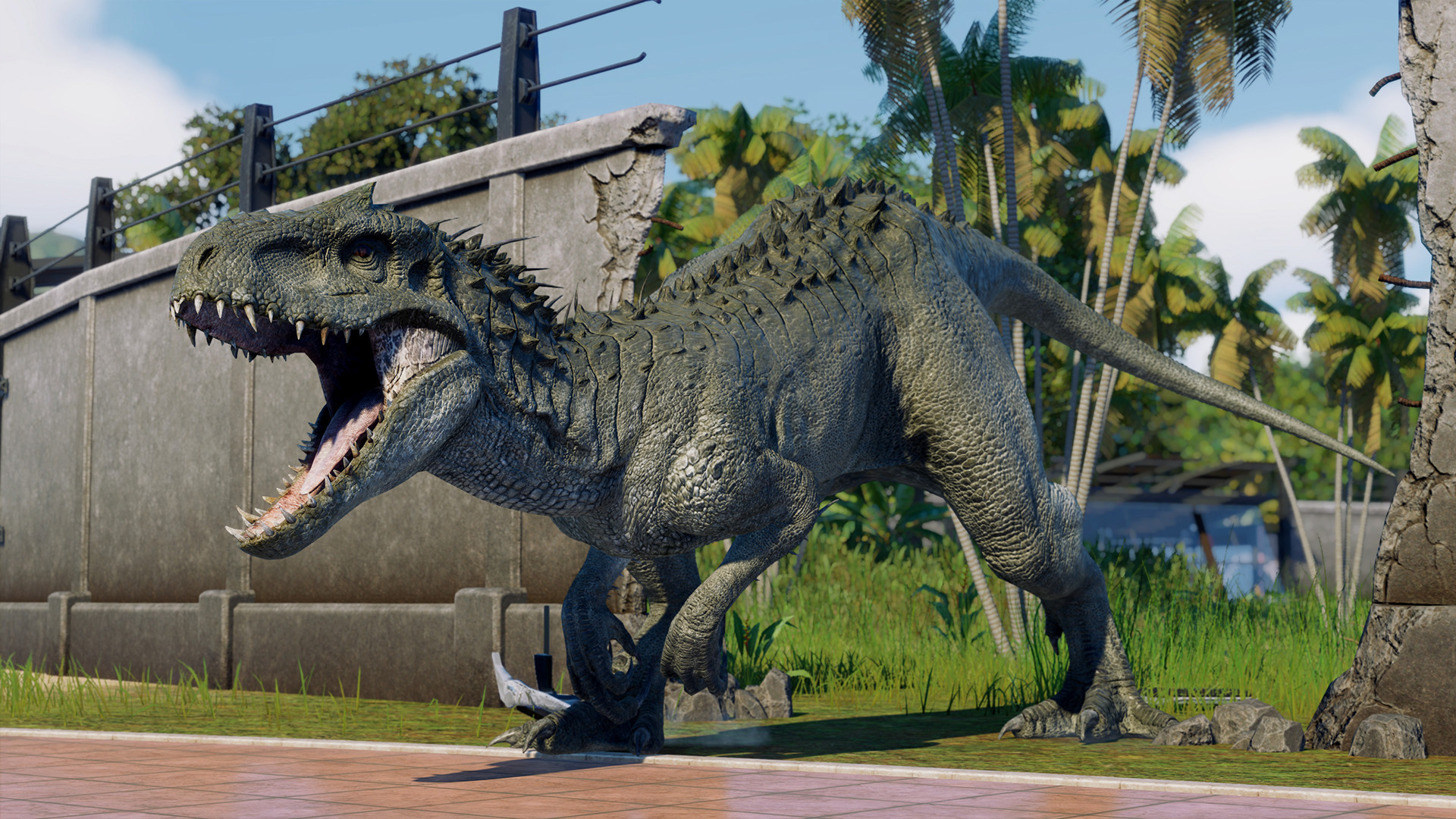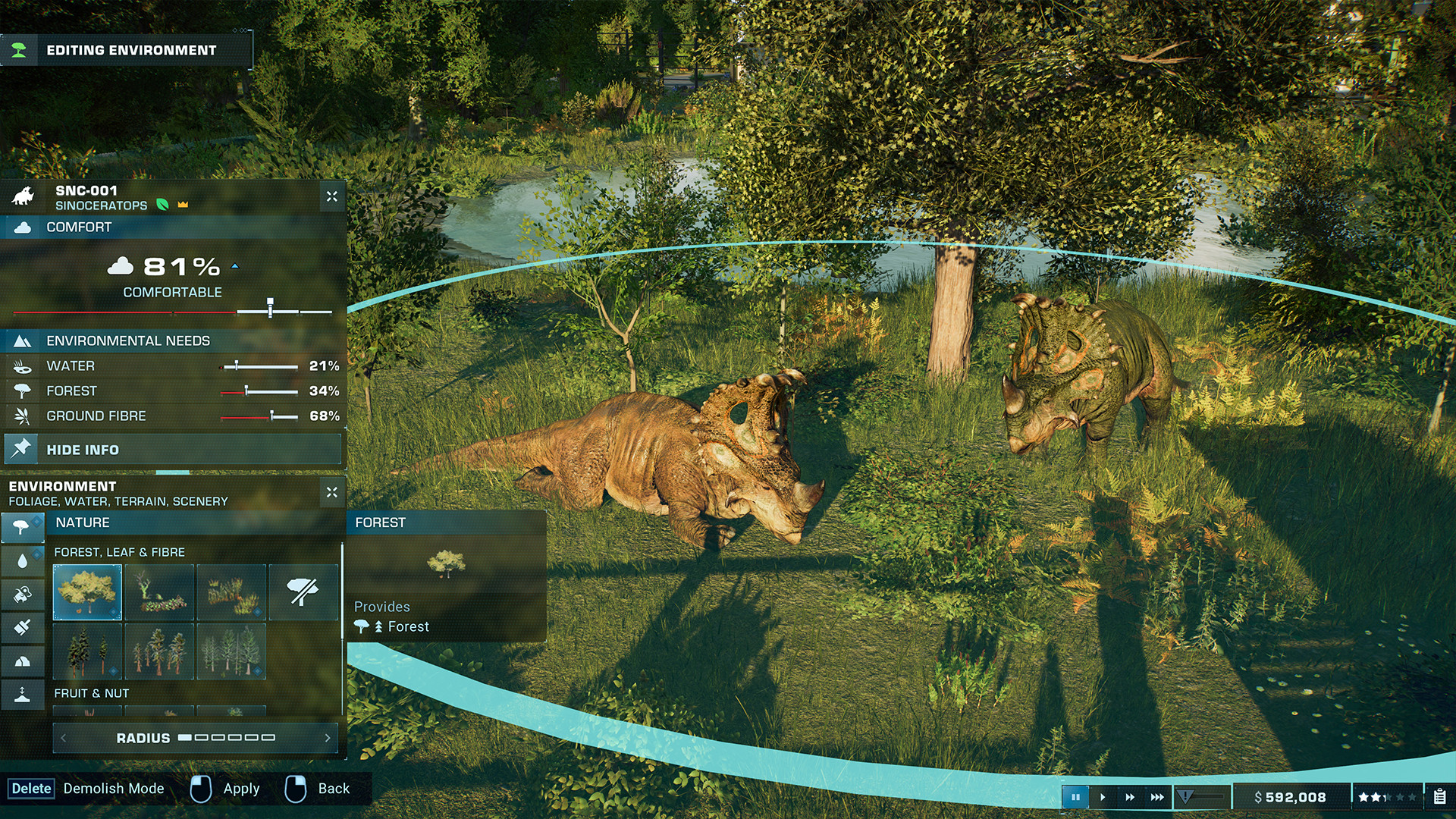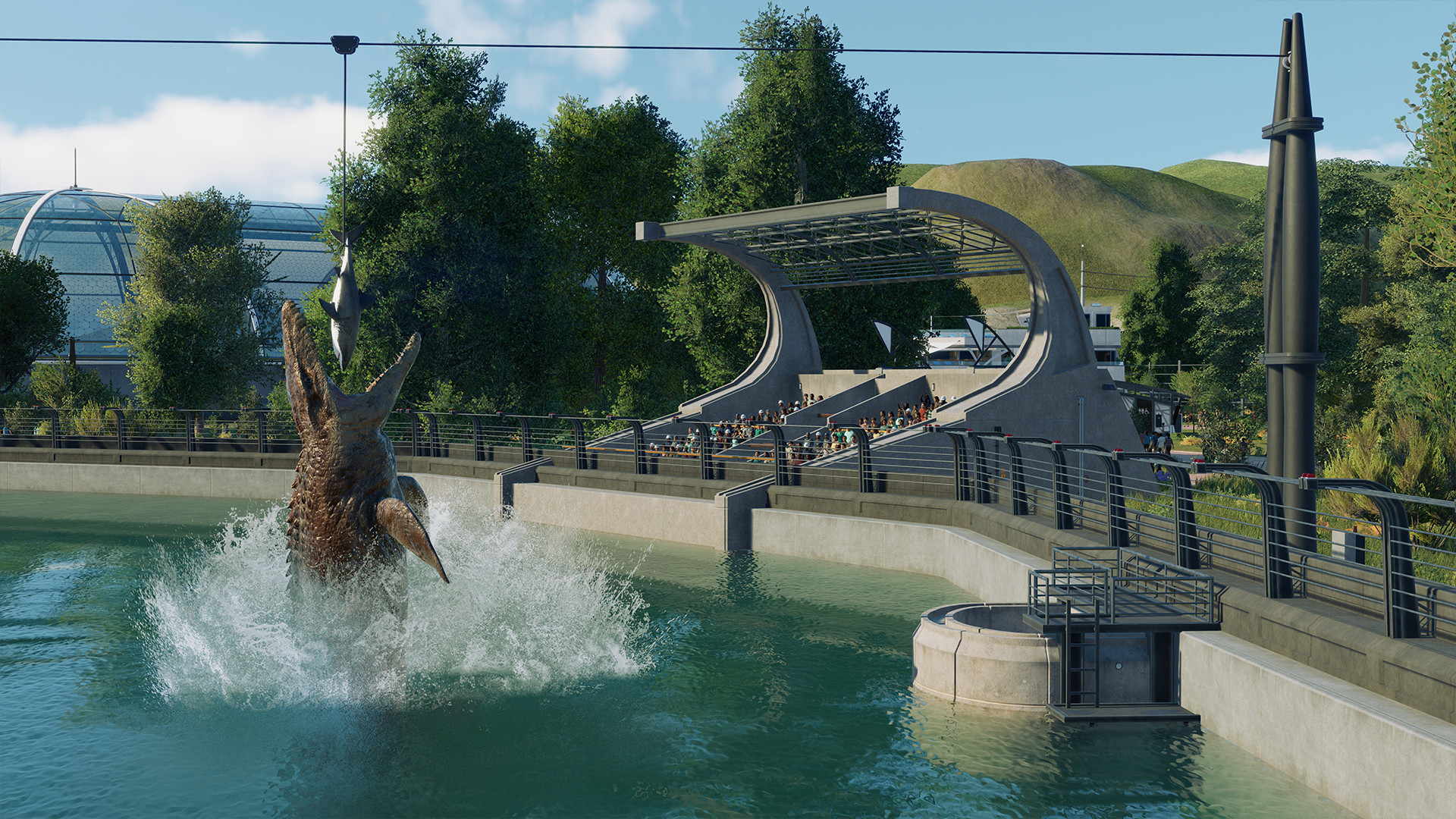
A sequel to Frontier’s 2018 title – Jurassic World Evolution, was practically a guarantee. Despite a rather rocky start with limited content, Jurassic World Evolution went on to become a worthy successor to the OG Jurassic Park Operation Genesis. But it still lacked the complexity and scope of some of Frontier’s own titles such as Roller Coaster Tycoon. A sequel would only need to expand and build on the base that the original game had already established, and it would be an instant success with the community. Well, Frontier decided to do just that, and we now have Jurassic World Evolution 2 on our hands.
AT A GLANCE
GENRE: Simulation, Strategy
DEVELOPER: Frontier Developments
PUBLISHER: Frontier Developments
RELEASE DATE: 9 Nov, 2021
FINAL SCORE: 8.3/10
Since the games follow the events of the movie, the chances of another typical park building simulator were pretty much thrown out of the window after the events of the last film, the campaign instead takes you through various locations in North America. You get to travel through different biomes as you capture and rehabilitate escaped a wide variety of Dinosaurs, housing them in facilities for conservation and research.
This gives Jurassic World Evolution 2 a very different look from the first game, with richer and more varied environments, and with slightly different types of objectives. However, the game still feels and plays out extremely similar to the first game. Because the core gameplay remains the same, and you will still be creating enclosed dinosaurs while tending to their needs, responding to emergencies and disasters when needed. However, the core gameplay is vastly improved and in-depth now, as you will have to hire scientists with varying special bonuses, set up ranger posts to monitor your dinosaurs and their stats as well as cater to different types of audiences.
The dinosaurs themselves behave much more realistically this time around. Even though an update added pack mechanics and other behaviors to dinosaurs in the previous game, they were still lacking. This time around, dinosaurs flock together more realistically, have territories and pack hunters can actually work together to take down much larger dinosaurs.
The story is a self-contained original narrative that serves to fill in the gaps between the last movies and the new upcoming one. The premise is that we are part of the Department of Fish and Wildlife, which must capture and contain the dinosaurs that are loose on the continent. To do this, we visit a series of locations, exploring all the new biomes in the game which you can then play in other modes.
The objectives are mostly simple, giving you a feel of the game, slowly ramping up the difficulty. New players get to learn how the gameplay works for the first time, such as how to build fences, modify the terrain to meet the dinosaur’s needs, and build other necessary buildings. While veterans get a taste of what’s new this time, for example, there are way more options in terrains and herbivores actually need specific types of vegetation because there are no longer feeders for them. You will also build the operations buildings to launch expeditions and take care of emergency situations. The ranger station and ACU center have now been clubbed together allowing you to quickly access the appropriate vehicle from a central hub instead of cycling through.
While it starts off in a fun and engaging way, it ends a bit abruptly and left me wanting more. I’m sure this is going to get expanded and they are limited with how much they can actually explore the story due to the next film not even being out but it feels way too short.

In the end, the campaign remains as a prologue to the rest of the game, very entertaining but that you can finish in four hours, and it never really takes advantage, neither narratively nor gameplay-wise of the strengths of the franchise.
Thankfully, Chaos Theory is an alternative campaign that is set during each of the main Jurassic Park films. There are five scenarios each inspired by the five films in the series: Jurassic Park, The Lost World, Jurassic Park 3, Jurassic World, and Fallen Kingdom. It is presented as a “What If?” of the saga, in which you get to choose critical decisions in the moments of the films where everything goes wrong. This is, in my opinion, the main chunk of the game, aside from the sandbox mode. It is in these campaigns that you will find all the complexity that the main story mode does not provide. The main story just felt like an extended tutorial after I finished my second chaos theory scenario.
But nothing prepares you for the stress that, once the park starts running, anything can and will go wrong. Having to pay attention to a dozen things at the same time, making sure dinosaurs are safely enclosed and satisfied, keeping your guests happy and making sure you earn a profit at the end of it all.

You will still have moments of peace and calm while you for your Tyrannosaurus to hatch, getting a chance to fill your coffers before chaos erupts again, but there’s never a dull moment in this mode, which was one of the most tedious aspects of the original game. The satisfaction of making your park prosper despite the challenges you face, in Chaos Theory mode is worth it all.
The love and understanding that frontier has for the Jurassic Park franchise are felt in every detail, from the countless dinosaurs with their rich designs to the design of the buildings, the vehicles, or the commentary from Malcolm, Wu, and the original Frontier characters like Cabot Finch.
The gigantic database also returns with information on the characters of the saga, the dinosaurs, and even the real sites where you extract fossils.

The biggest addition in terms of content, however, is the addition of marine and an expanded roster of aerial dinosaurs. These dinosaurs come with their own self-contained habitats and have slightly different mechanics associated with them. The roster of dinosaurs was already impressive in the previous game but the addition of these distinct species brings a very welcome touch of distinction and color to the impeccable selection of prehistoric fauna.
In total, 75 species in the base game, without DLCs – there are five more in the deluxe edition. And as in the original, the textures, animations, and interactions are very realistic: they are beautiful to see and take photos with the Capture mode.
A few other major gameplay changes include being able to incubate dinosaur eggs in batches, and the dinosaurs having unique traits from birth. You are now finally able to pause or speed up the time which makes the gameplay experience far more superior and one of the most important quality of life changes in the sequel.
A rather controversial change is that there is only one map available at the start of the game for sandbox mode – the rest you unlock by completing Chaos Theory challenges or campaigns. You will also not be able to raise flying dinosaurs or aquatic ones until you investigate them in challenge mode, and the same goes for other species, which you must discover first by sending expeditions.
Limiting sandbox mode so much at the beginning can put some of the older players back, especially people who loved sandbox mode. Although in the long run, the satisfaction of unlocking everything little by little feels more gratifying to me. Of course, there is still a large portion of the community that prefers to take a more creative and fun-filled approach to the game instead of chasing objectives, and I wish frontier was able to make these early restrictions a bit less harsh.
There are also a few bugs and glitches and overall jankiness in certain areas that I know frontier will be patching out. Finally, having played my second Frontier game on a console, the way they port games with such complex controls to the gamepad deserves a round of applause. I never felt limited by the controls and had a great experience overall.






